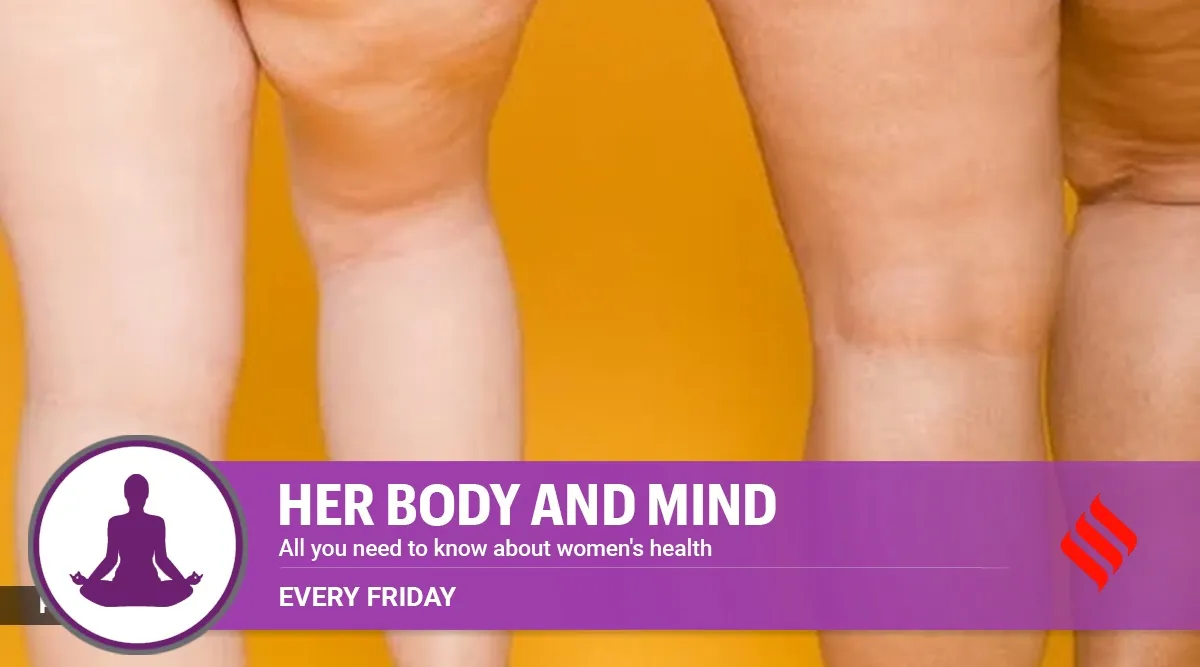If you thought you were the only one to be ashamed of the sagging skin and lumpy fat around your thighs, arms and tummies, know that you have company. That’s because about 90 percent of women over the age of 21 battle cellulite, a fatty tissue deep in the skin that pushes past connective tissue and forms folds, bumps, hollows, and knots on the skin’s surface. It is mainly felt in fat storage areas such as the thighs, buttocks and hips.
While there is no universal solution to completely eliminate cellulite, you can manage it and reduce its visibility. Besides, it is harmless beyond having a psychological effect on appearance-conscious women.
What causes cellulite?
The hormone estrogen plays an important role in the formation of cellulite, which is why men do not develop this condition. “It promotes fat storage, contributing to larger fat cells and more visible cellulite. During menopause, when estrogen levels decrease, cellulite can become more noticeable due to natural thinning of the skin,” says Dr Ankita Pant, Consultant Dermatology, Max Multi Specialty Centre, Panchsheel Park, Delhi.
Cellulite usually occurs in high-estrogen situations, such as pregnancy, lactation, long-term use of oral contraceptives, or hormone replacement therapy in postmenopausal women. Other factors that can lead to an increase in the formation of cellulite are increasing age, poor lifestyle and obesity. “Poor circulation and chronic inflammation, often from an unhealthy lifestyle, can make cellulite worse. Factors such as eating processed foods, high fat/sugar/salt intake, alcohol consumption, smoking and a sedentary lifestyle can contribute to the development of cellulite,” adds Dr Pant. Genetics also play a role.
So, what’s going on under the skin?
The layers below the skin include a superficial layer of fat, fibrous tissues that hold that fat, called septa, a deeper layer of fat, and more fibrous tissue. “The complex interplay between blood supply, fat distribution and the arrangement of septa creates a mechanical pull on the skin that causes dimpling,” says Dr Mahima Agarwal, Consultant Dermatology, Fortis Hospital, Shalimar Bagh.
How to improve the appearance of cellulite?


Dr Pant suggests some lifestyle changes. “Lose weight, exercise to improve circulation (this limits tissue removal), control your sugar, alcohol and salt intake to reduce water retention, and incorporate cardio and strength training. The idea is to reduce body fat and areas affected by tone, build lean mass and camouflage cellulite,” she says.
What are effective cellulite treatment options?
1. Retinol creams: Stimulate collagen, reducing the unevenness of skin affected by cellulite when used consistently over several months. Some have found relief in topical caffeine.
2. Vacuum-assisted massage, which is mechanical stimulation of circulation, aids lymphatic drainage and is known to provide temporary relief.
3. Acoustic wave therapy: This, says Dr Pant, involves at least six sessions of shock wave therapy and can break down fat, improve circulation and boost local collagen production.
4. Radiofrequency treatments: These reduce the volume of fat in the areas affected by cellulite and thicken the dermis by inducing collagen production.
5. Laser treatment with devices like Cellulaze have shown effectiveness for up to a year.
6. Injectable fillers can also smooth the skin.
What about oral supplements?
These mainly improve the appearance of the skin and hide the dimples. “Supplements containing extracts from Vitis vinifera, Ginkgo biloba, Centella asiatica, Melilotus officinalis, Fucus vesiculosus, fish oil, chokeberry juice and borage oil are believed to be useful in treating cellulite due to their antioxidant effects. Studies have revealed that taking collagen supplements orally for six months can improve the appearance of cellulite,” says Dr. Agarwal.
Do you need surgery?
There are undercut treatments that use a special needle to break the fibrous cords that pull the skin down, reducing the appearance of cellulite. “But liposuction, mesotherapy (enhancement of local fat burning) and
cryolipolysis (using cold temperature to break down fat cells) has no effect,” says Dr Pant.


